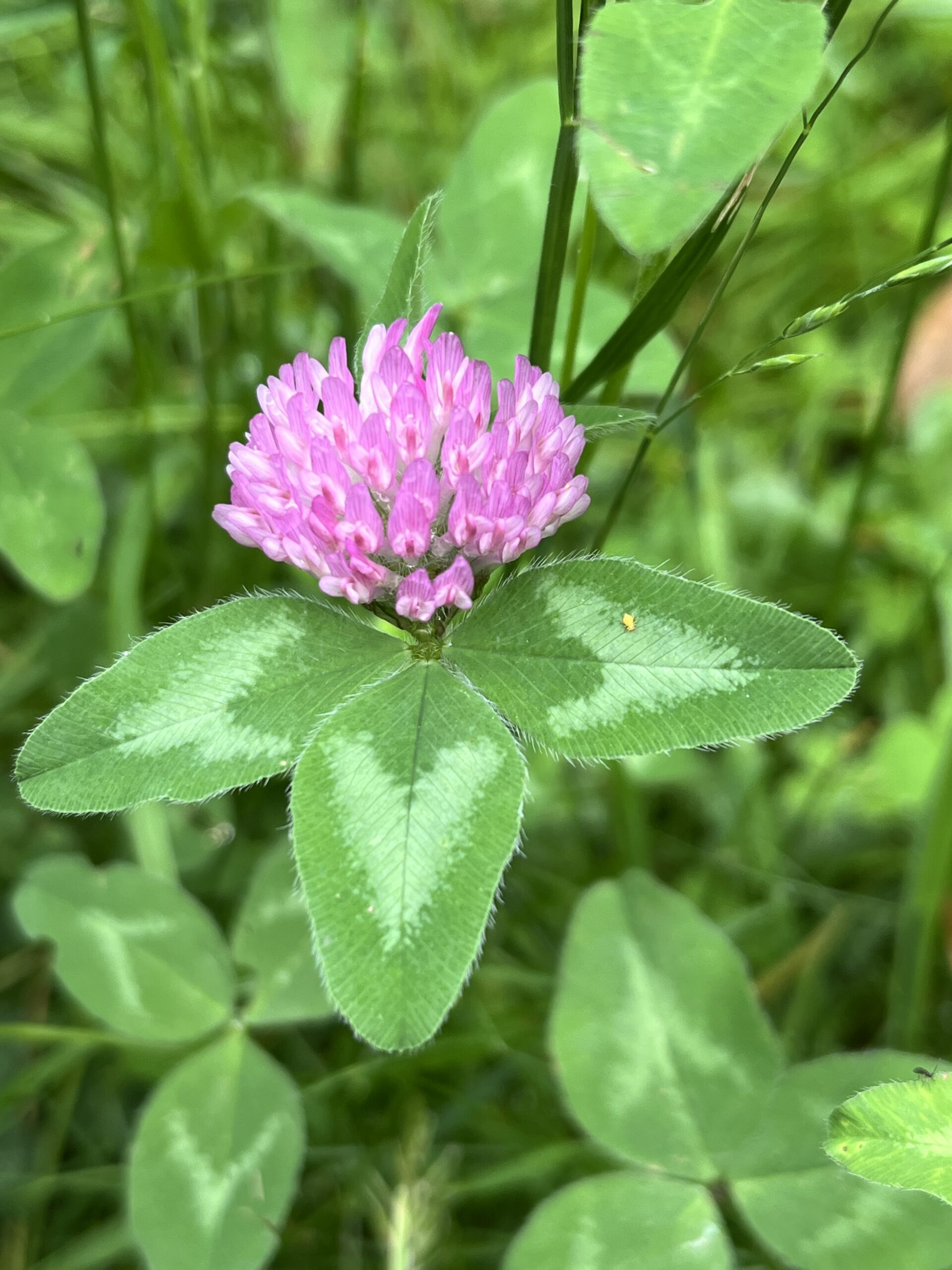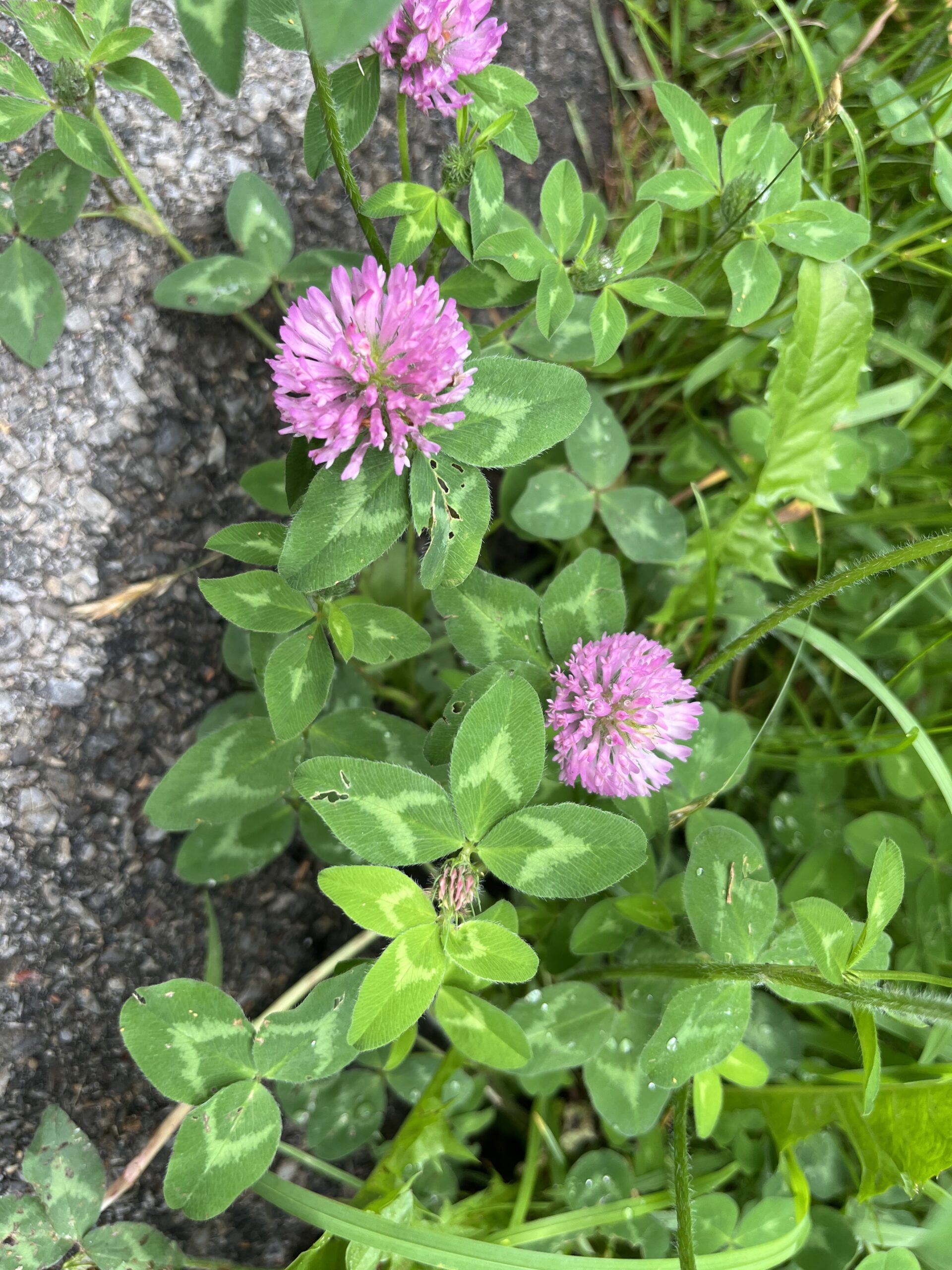Habit: Trifolium pratense grows as a creeping, perennial spreading radially like a rosette. New vegetation is glabrous to pubescent. The pubescent, trifoliate leaves are arranged alternately. The leaflets are to 3 cm in length, oblong to ovate with a round or retuse leaf apex, with a slightly serrate/crennate margin and are ab- and adaxially pubescent. There are oblong, triangular stipules at the base of the petiole.
The complete, perfect, zygomorphic flowers are in terminal heads with peduncles longer than the petioles. The calyx has 5 partially fused, pubescent green sepals forming a tube with the sepal lobes the same length as the tube. The corolla has 5 pink/purple/red petals, the upper enlarged to form the banner and the lower 2 fused to form the keel. There are 10 diadelphous stamens. The ovary is superior and has a single locule with numerous seeds. The fruit is a brown legume.
Habitat: Trifolium pratense grows in Human Altered environments (lawns and fields) in the Lucayan Archipelago.
Distribution: Trifolium pratense is NOT native to the Lucayan Archipelago but occurs irregularly in the northern islands. It is native to Europe and central Asia and parts of north Africa and now occurs throughout most of North America and Asia.
Medicinal/Cultural/Economic usage: Trifolium pratense is not known to be used medicinally in the Bahamas.
It has been used throughout the world as a feed crop as well as to assist in nitrogen fixation to increase soil fertility.
It has been planted as an ornamental.

